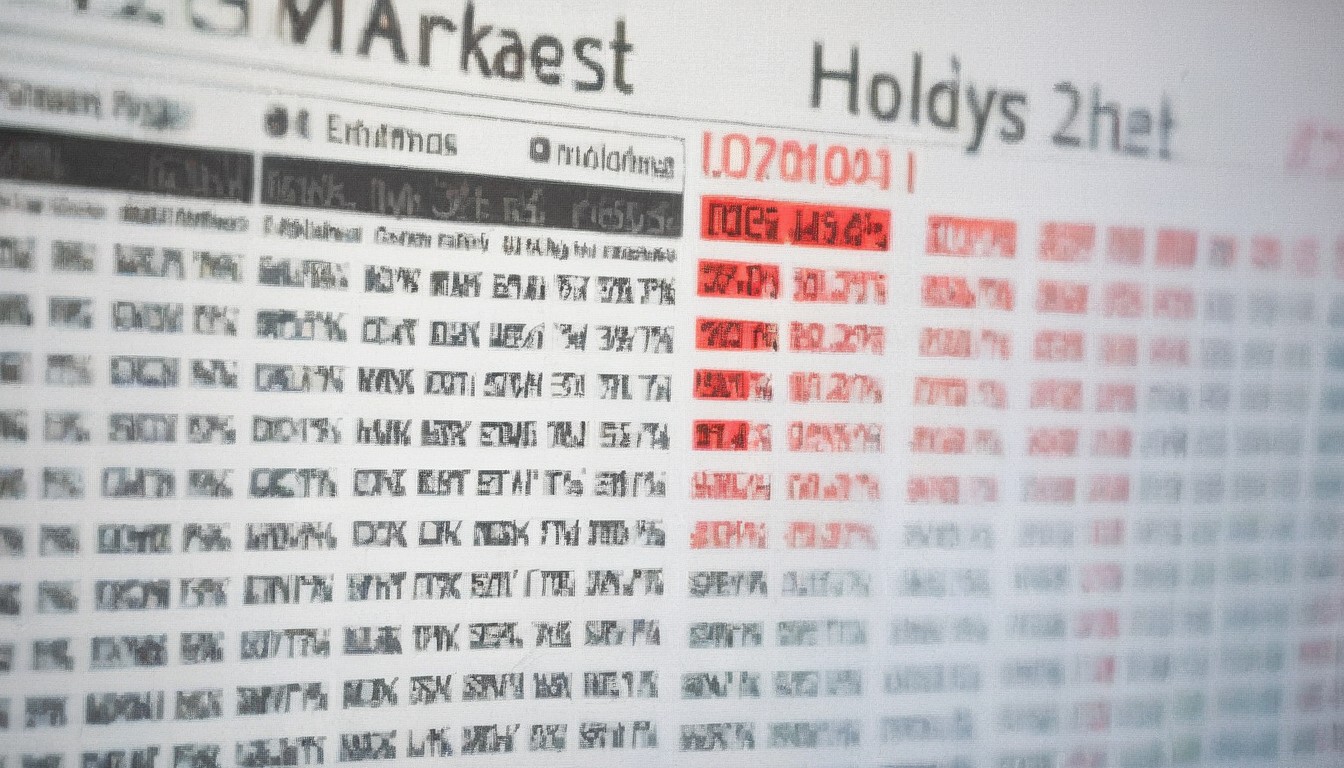Introduction: In the bustling world of finance, amidst the constant flurry of trades and transactions, there exists a series of pauses known as stock market holidays. These seemingly brief respites from the daily grind of trading carry far-reaching implications for investors. Let’s delve deeper into the significance of these market closures and what they mean for those navigating the intricate landscape of finance.
Understanding Stock Market Holidays: Stock market holidays, those days when trading grinds to a halt, are more than just breaks in the action. They are moments of pause orchestrated for various reasons. Some holidays are nationally recognized, while others are specific to certain regions or cultures. Regardless of their origin, these holidays serve as punctuation marks in the continuous narrative of market activity.
Why Markets Take a Break: The decision to close the markets on holidays stems from a combination of factors. Firstly, it ensures a level playing field for all participants by preventing trading imbalances caused by absenteeism. Moreover, these breaks provide exchanges with the necessary time for maintenance and system updates, ensuring the seamless operation of trading platforms. Additionally, cultural and religious observances play a significant role, with markets honoring the traditions of the communities they serve.
Impact on Investors: For investors, stock market holidays represent both challenges and opportunities. Understanding their implications is key to navigating the financial landscape effectively. Holiday schedules dictate trading activities, requiring investors to plan ahead to avoid missed opportunities or unexpected restrictions. Moreover, these breaks often precede or follow periods of heightened volatility, necessitating a proactive approach to risk management.
Strategies for Holiday Navigation: To thrive in the face of stock market holidays, investors can adopt several strategies. Planning ahead, diversifying portfolios, and staying informed are paramount. By anticipating market closures and adjusting strategies accordingly, investors can mitigate risks and capitalize on opportunities as they arise. Additionally, maintaining a diversified portfolio ensures resilience in the face of holiday-induced disruptions, while staying informed enables investors to stay ahead of the curve even during market closures.
Navigating Stock Market Holidays: A Strategic Approach
In the fast-paced world of finance, where every second counts, the concept of stock market holidays may seem like a temporary pause in the relentless march of trading activity. However, these brief respites hold a deeper significance for investors, shaping market dynamics and influencing investment strategies. Let’s explore how investors can navigate stock market holidays with a strategic approach.
Understanding the Impact: Stock market holidays disrupt the normal rhythm of trading, affecting liquidity, volatility, and investor sentiment. As trading volumes dwindle and market activity slows, investors may encounter challenges such as reduced liquidity and increased bid-ask spreads. Moreover, the days leading up to and following a holiday often witness heightened volatility as traders adjust their positions in anticipation of market closures or react to news and events during the break.
Planning Ahead: Successful navigation of stock market holidays begins with careful planning. Investors must familiarize themselves with holiday schedules well in advance and adjust their trading strategies accordingly. This may involve scaling back positions, hedging against potential risks, or strategically timing trades to capitalize on pre-holiday volatility. By proactively anticipating market closures, investors can avoid being caught off guard and position themselves for optimal outcomes.
Managing Risk: Stock market holidays introduce unique risks that investors must address to safeguard their portfolios. One such risk is the possibility of gap openings or sharp price movements when trading resumes after a holiday. To mitigate this risk, investors can implement stop-loss orders or employ hedging strategies to protect against adverse market movements. Additionally, maintaining a diversified portfolio across asset classes and geographies can help spread risk and minimize the impact of holiday-induced disruptions.
Staying Informed: Despite market closures, information continues to flow, and events unfold even during holidays. Staying informed about market news, economic developments, and geopolitical events is essential for making informed investment decisions. Investors should leverage news sources, economic calendars, and market analysis to stay abreast of relevant developments and adjust their strategies accordingly. By remaining vigilant and adaptable, investors can navigate the challenges of stock market holidays with confidence.
